Indigenous Governance Database
IGD Database Search
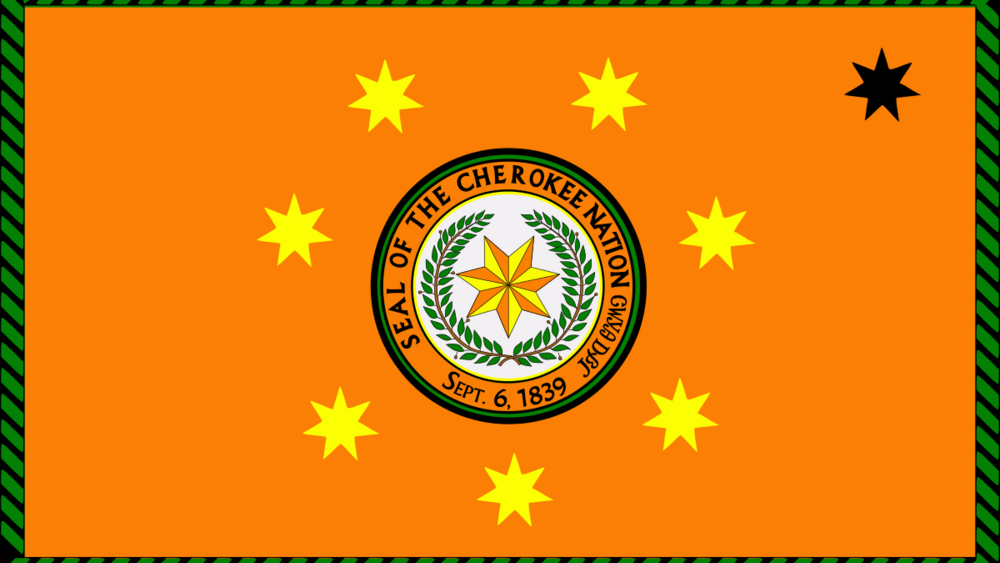
Cherokee Nation: Amendments Excerpt
Article XV. Initiative, Referendum and Amendment. Section 9. No convention shall be called by the Council to propose a new Constitution, unless the law providing for such convention shall first be approved by the People on a referendum vote at a regular or special election. Any amendments,…
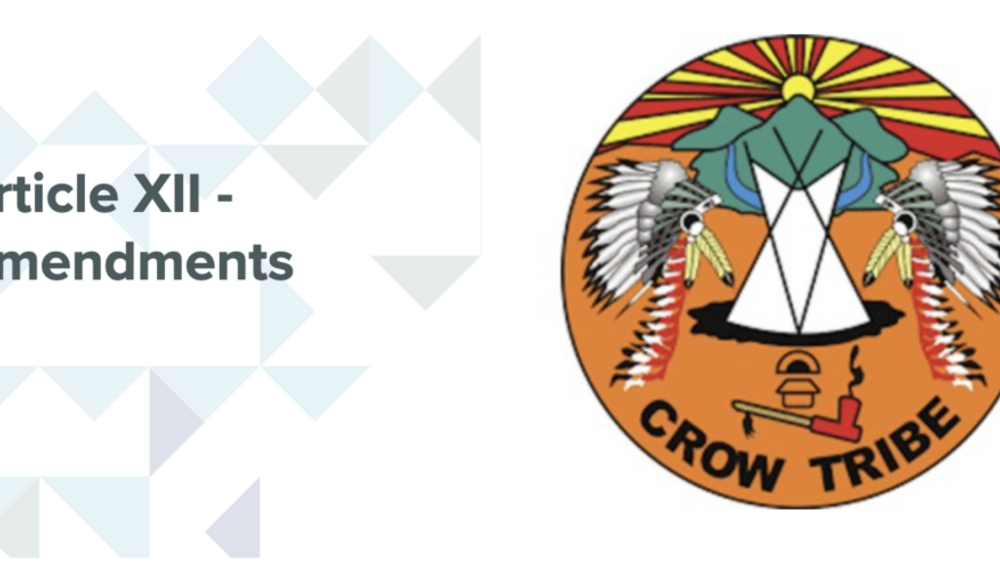
Crow Tribe: Amendments Excerpt
ARTICLE XII - AMENDMENTS This Constitution may be amended by a two-thirds (2/3) vote ofthe Crow Tribal General Council provided that at least thirty percent (30%) of the Crow Tribal General Council vote in an election called for the purpose of amending the Constitution. The process to propose…
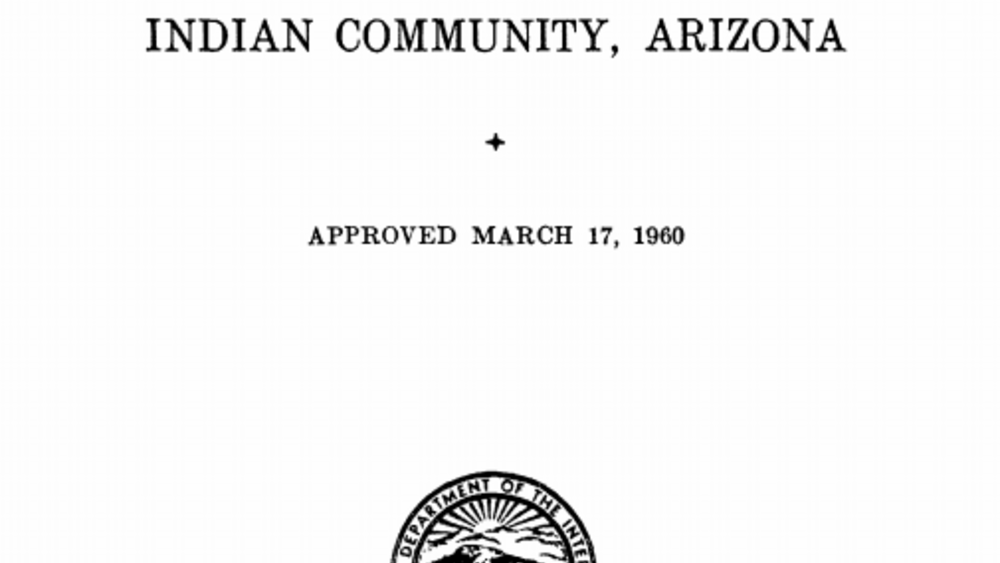
Gila River Indian Community: Legislative Functions Excerpt
ARTICLE VI–QUALIFICATIONS OF OFFICERS Section 1. No person shall be elected or hold office as Governor, Lieutenant Governor, Chief Judge, Associate Judges, or Councilmen unless he (1) is a member of the Community; (2) has reached the age of twenty-five (25) years; (3) has been living in the…
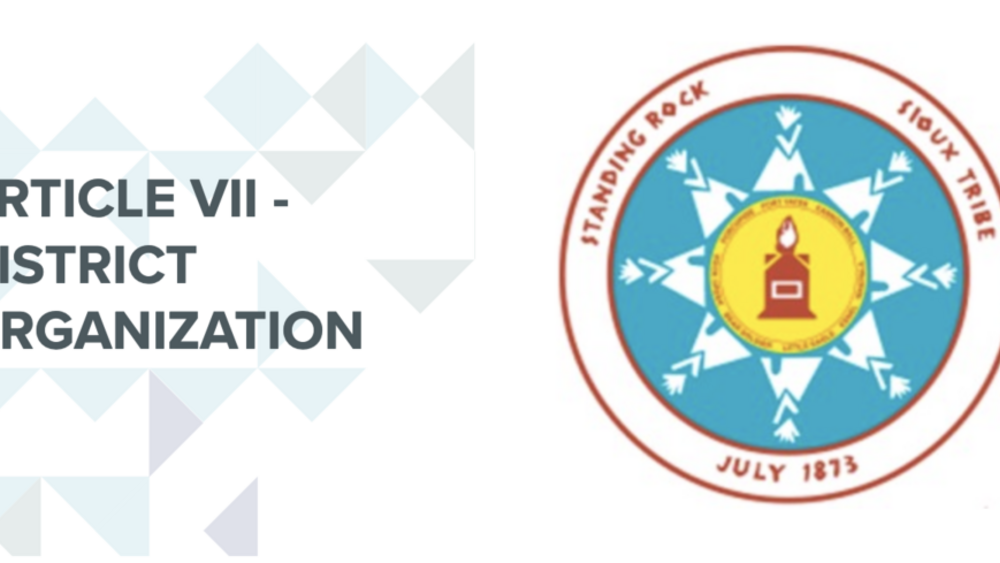
Standing Rock Sioux Tribe: Distribution of Authority Excerpt
ARTICLE VII - DISTRICT ORGANIZATION Each district recognized under Article III, Section 2, hereof, may organize local District Councils and elect District officers to consult, make recommendations and advise the Tribal Council, the Superintendent of the Reservation or officer in charge, and the…
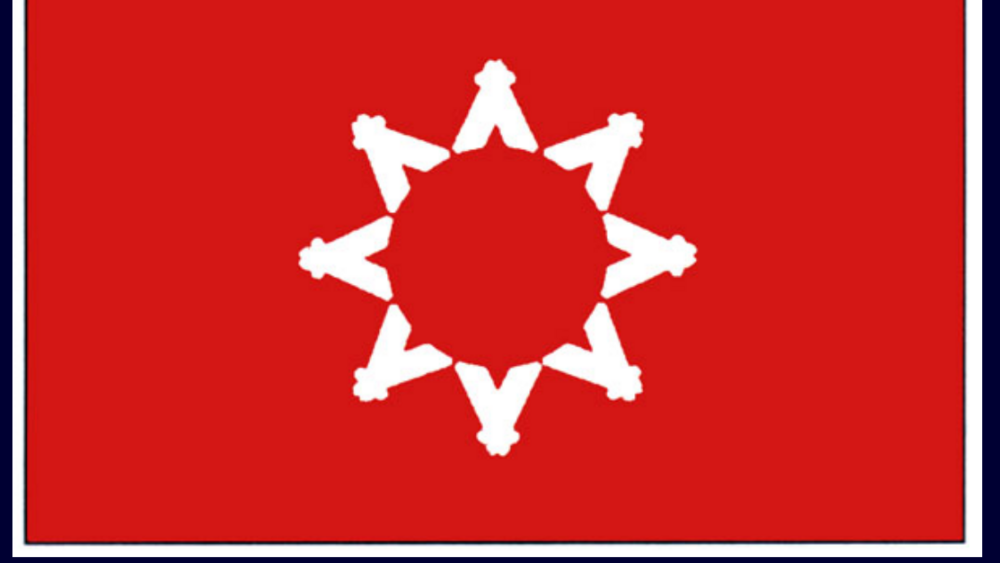
The Indian Reorganization Act at 80 years
At Pine Ridge, daily controversy surrounds the Indian Reorganization Act (IRA) of 1934. Congress enacted the IRA on June 18, 1934. However, the voting requirement was drastically altered just three days prior. This amendment (H.R. 7781, 49 Stat., 378) dated June 15, 1934, lowered the overall voting…
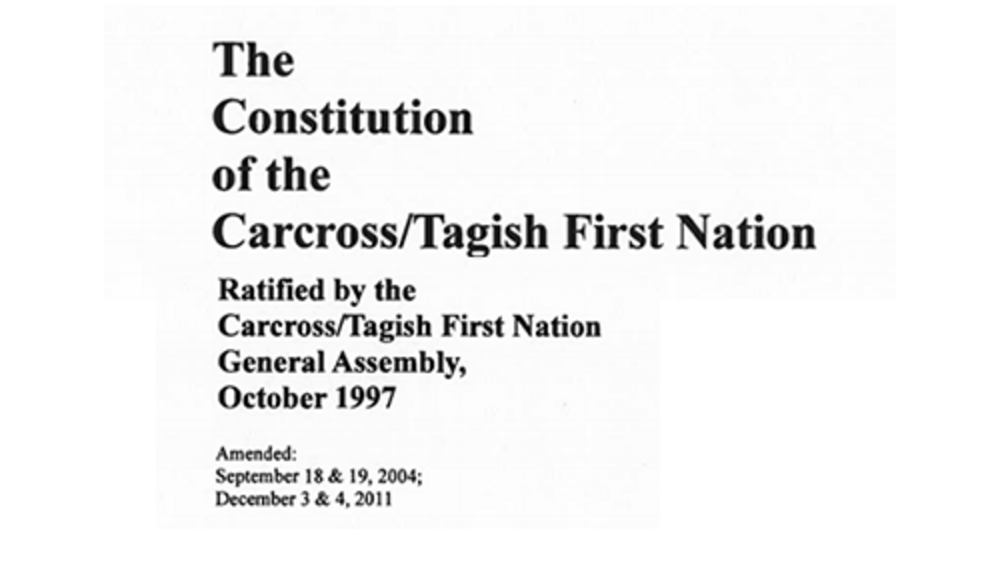
The Constitution of the Carcross/Tagish First Nation: Preamble Excerpt
MISSION STATEMENT The Carcross/Tagish First Nation is mandated to protect the environment, health and wellness, education and aboriginal rights of our citizens; to continue to preserve and protect our culture, traditions, and languages; to protect and develop our natural resources and strengthen…
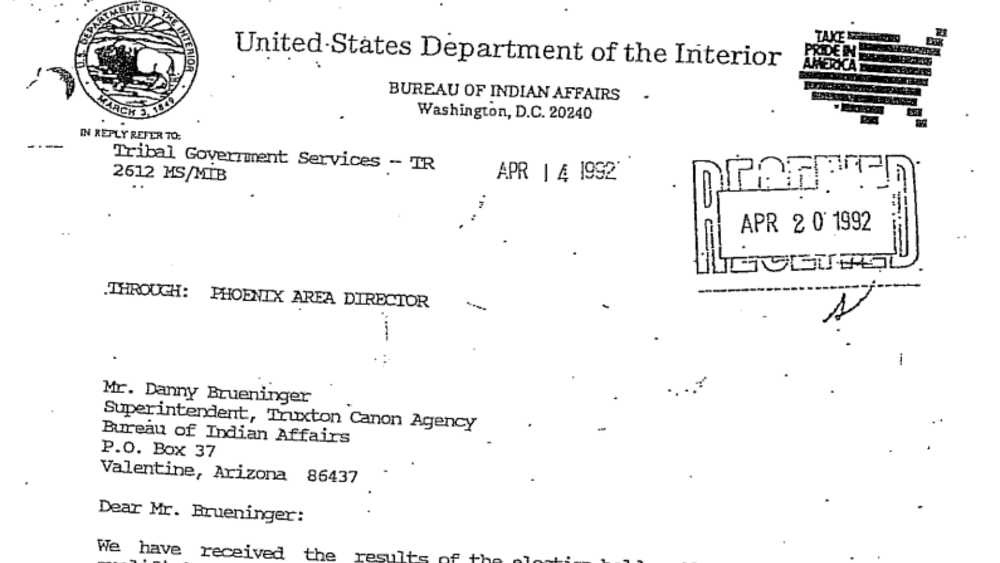
Yavapai-Apache Nation: Executive Functions Excerpt
ARTICLE VII - THE EXECUTIVE DEPARTMENT Section 1. Executives. The Executive Department shall consist of the Chairperson, Vice Chairperson, Secretary and Treasurer of the Tribal Council and such other persons as the Tribal Council or their designee may find necessary for the administration of tribal…
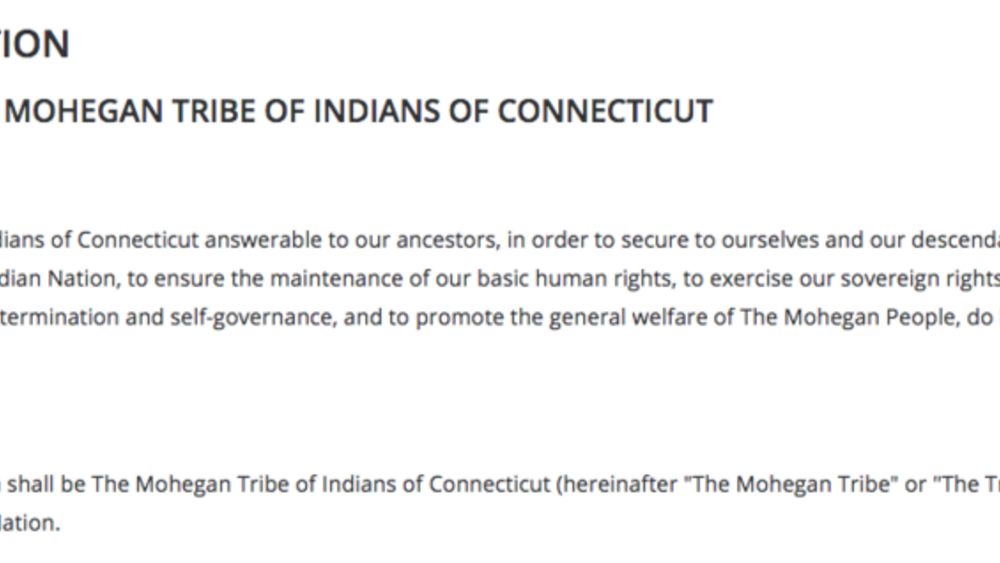
Mohegan Tribe: Executive Functions Excerpt
ARTICLE IX. - POWERS AND DUTIES OF THE TRIBAL COUNCIL Section 3. - [Powers and Duties of Chair.] The powers and duties of the Chair of The Tribal Council shall include, but not be limited to, the following: (a) to serve as the chief executive officer of The Tribe and as head of the executive…
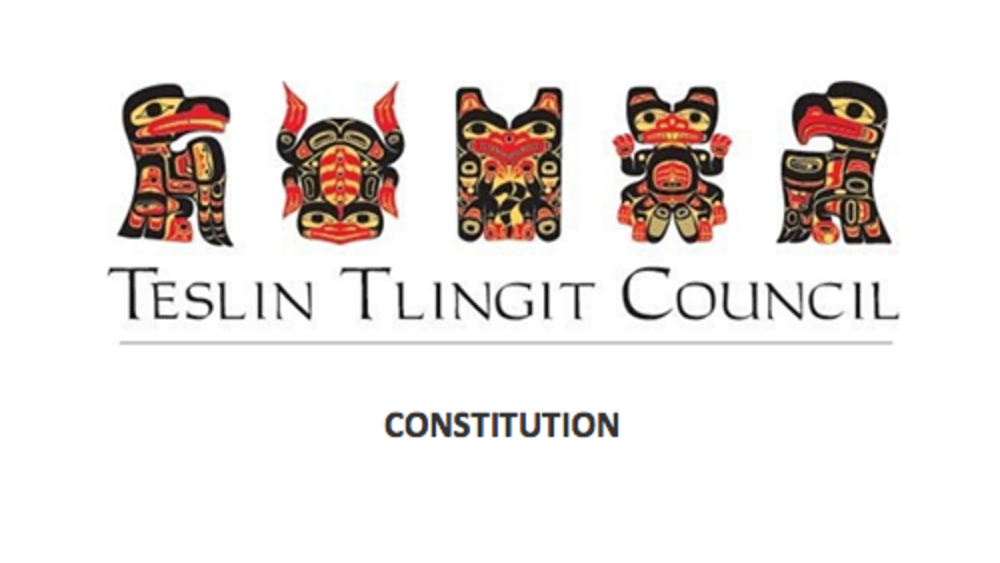
Teslin Tlingit: Governmental Structure Excerpt: Government
5. GOVERNMENT 5.1 The government of the Teslin Tlingit Council shall be based upon the traditional Clan system of government. 5.2 The citizenship and organization of each Clan shall be determined by the customs inherited and observed by the Clan and acknowledged by the other Clans. 5.3 Each…
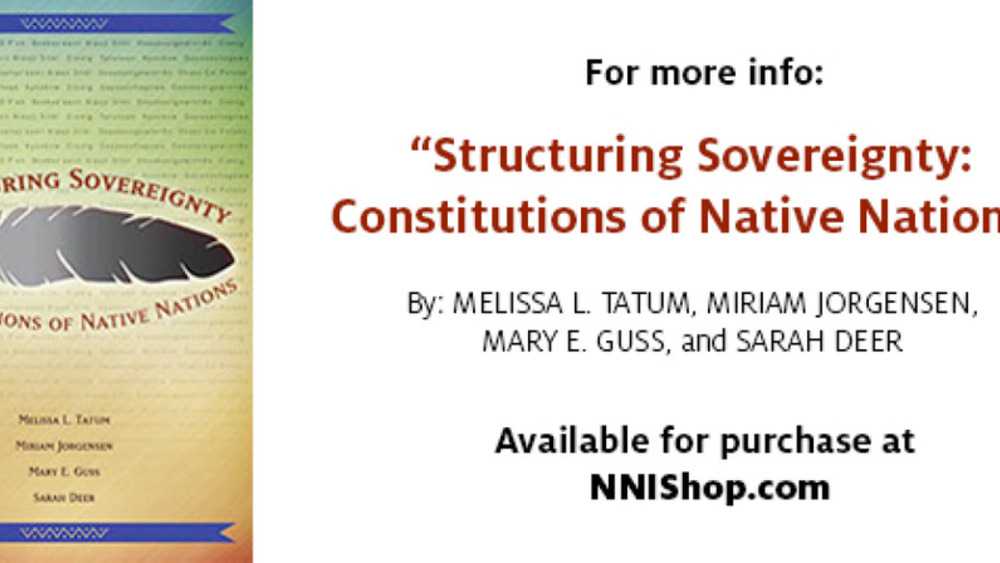
Confederated Salish and Kootenai Tribes, Constitutional Bylaws: Legislative Functions Excerpt
Article II - Ordinances and Resolutions Section 1. All final decisions of the Council on matters of general and permanent interest to the members of the Confederated Tribes shall be embodied in ordinances. Such ordinances shall be published from time to time for the information and education of the…
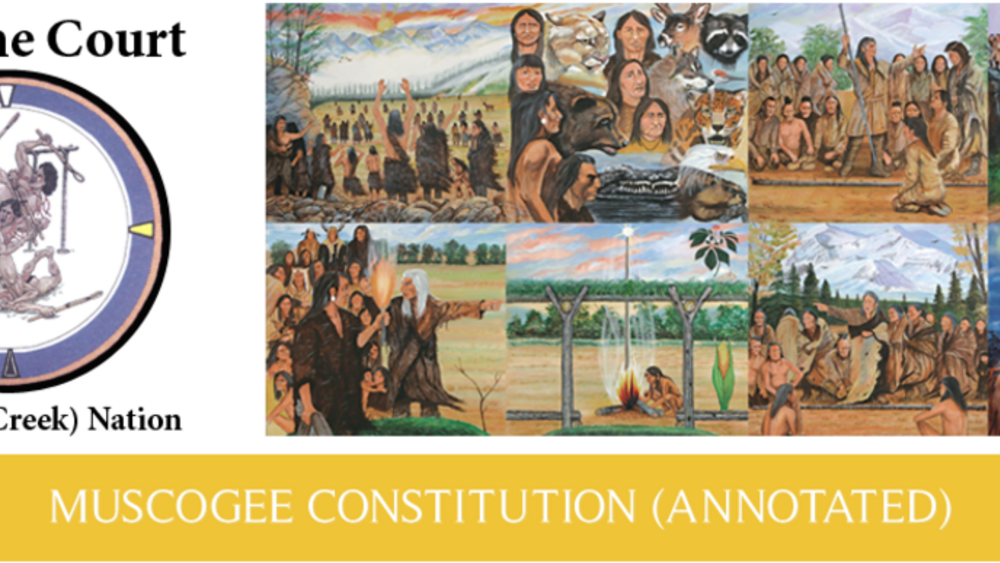
Muscogee (Creek) Nation: Legislative Functions Excerpt
ARTICLE VI - [Legislative Branch] Section 6. (a) Every bill which shall have passed the Muscogee (Creek) National Council, before it becomes ordinance, shall be presented to the Principal Chief of the Muscogee (Creek) Nation. If he approves, he shall sign it; but, if not, he shall return it…
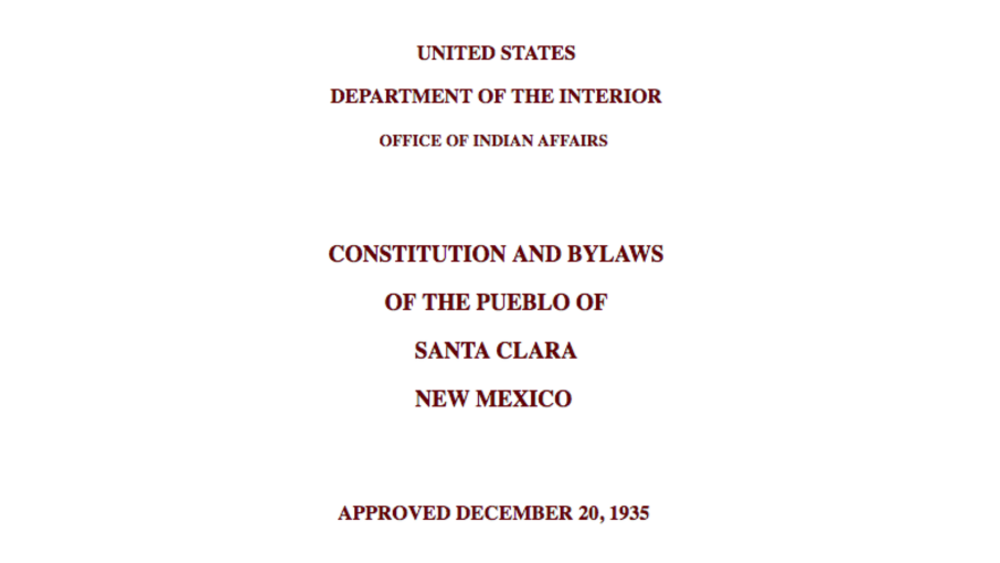
Pueblo of Santa Clara: Legislative Functions Excerpt
ARTICLE IV-THE PUEBLO COUNCIL AND ITS POWERS SECTION 1. Legislative power.-The legislative power shall be vested in the pueblo council, and the said power shall be exercised in accordance with, and not in conflict with, the constitution or any laws of the United States of America. The pueblo…
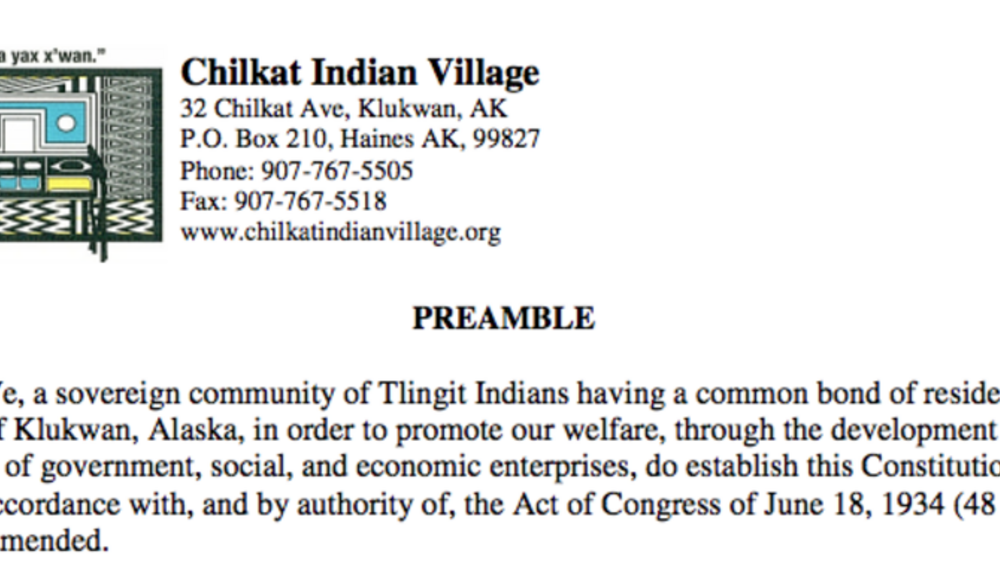
Chilkat Indian Village: Legislative Functions Excerpt
ARTICLE V — POWERS OF THE VILLAGE Section 1. The Council shall have the power: (n) To adjudicate matters of a civil and criminal nature, arising within the Tribe’s jurisdiction and to establish tribal courts if deemed necessary for that purpose. (o) To enact ordinances and take any other action…
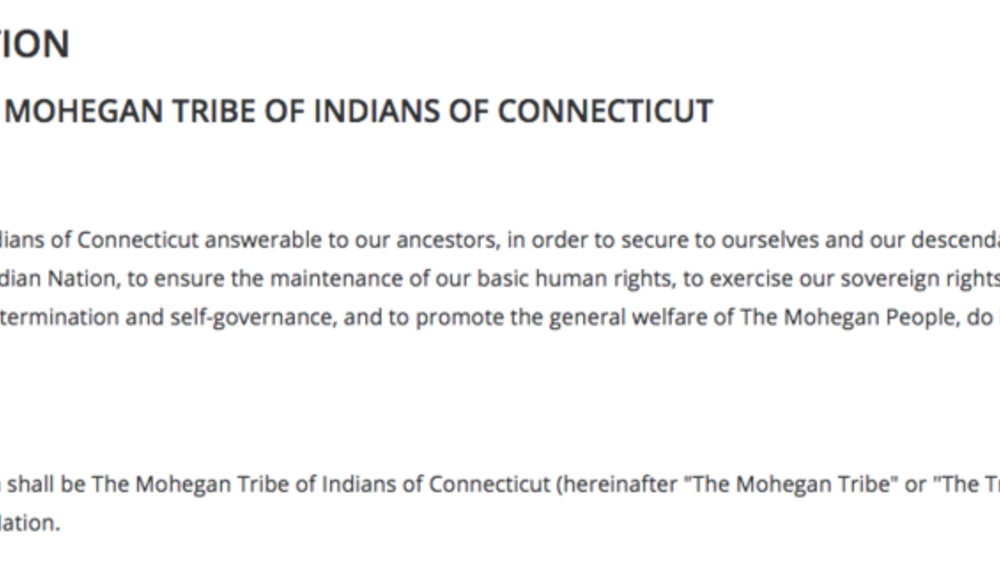
Mohegan Tribe: Legislative Functions Excerpt
ARTICLE IX. - POWERS AND DUTIES OF THE TRIBAL COUNCIL Section 1. - [Generally.] All legislative and executive powers of The Mohegan Tribe not granted to The Council of Elders shall be vested in The Tribal Council and shall be exercised in accordance with this Constitution and laws of…
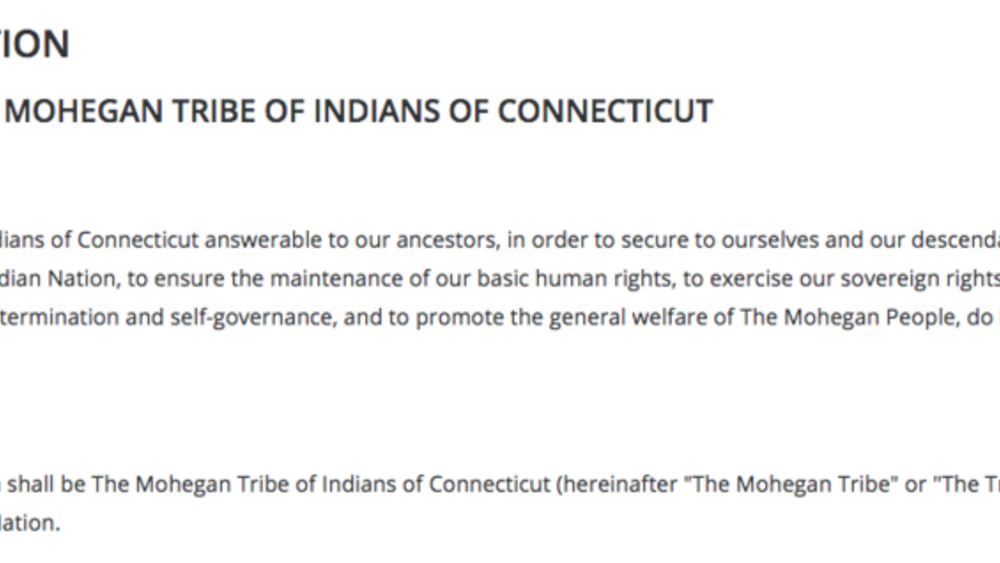
Mohegan Tribe: Judiciary Functions/Dispute Resolution Excerpt
ARTICLE X. - POWERS AND DUTIES OF THE COUNCIL OF ELDERS Section 2. - [Specific Judicial Review Powers.] (h) to establish and enforce rules of tribal custom, consistent with applicable federal statutes and the applicable regulations of the Secretary of the Interior, for the management of…
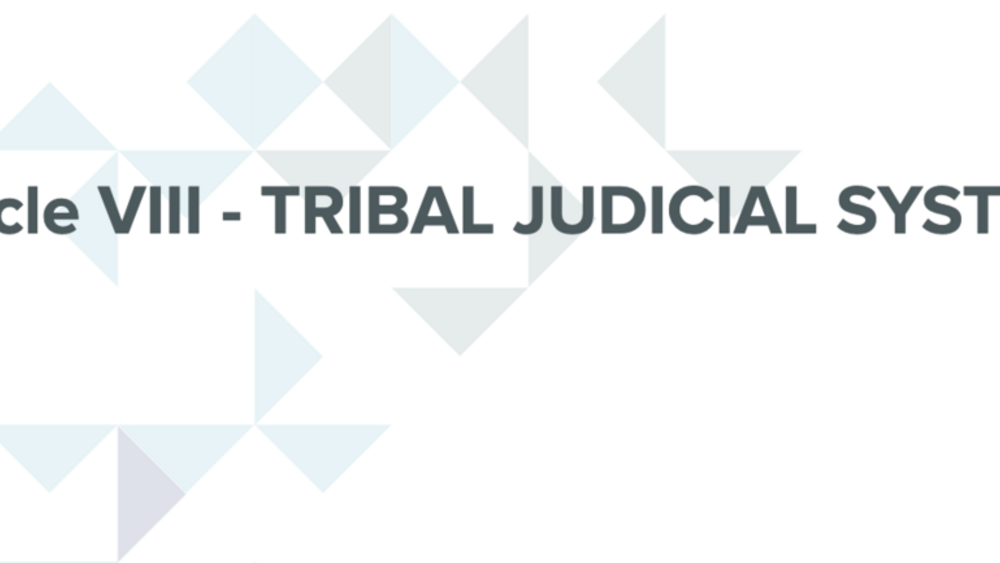
Ione Band of Miwok Indians: Judiciary Functions/Dispute Resolution Excerpt
Article VIII - TRIBAL JUDICIAL SYSTEM The judicial power ofthe Tribe shall be vested in the Tribal Council until such time as Tribal court(s) or other appropriate forums may from time to time be established by ordinance(s) for that purpose. Said ordinance(s) shall ensure the impartiality and…
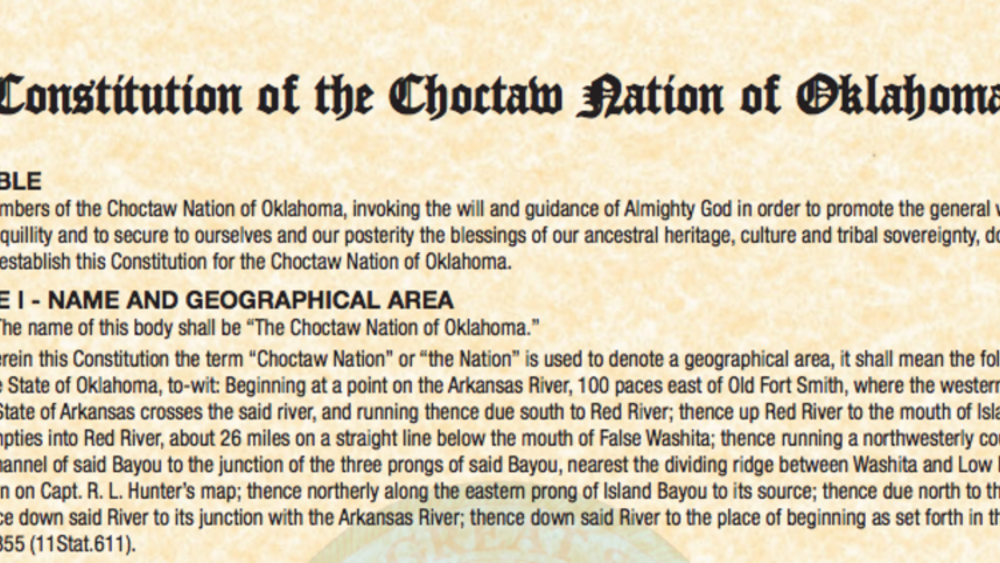
Choctaw Nation of Oklahoma: Judiciary Functions/Dispute Resolution Excerpt
ARTICLE XII - JUDICIAL DEPARTMENT Section 1. The judicial authority of the Choctaw Nation shall be vested in a Tribal Court which shall consist of three (3)-member Court appointed by the Chief with the advice and consent of the Tribal Council. One (1) such member,the presiding judge, shall be a…
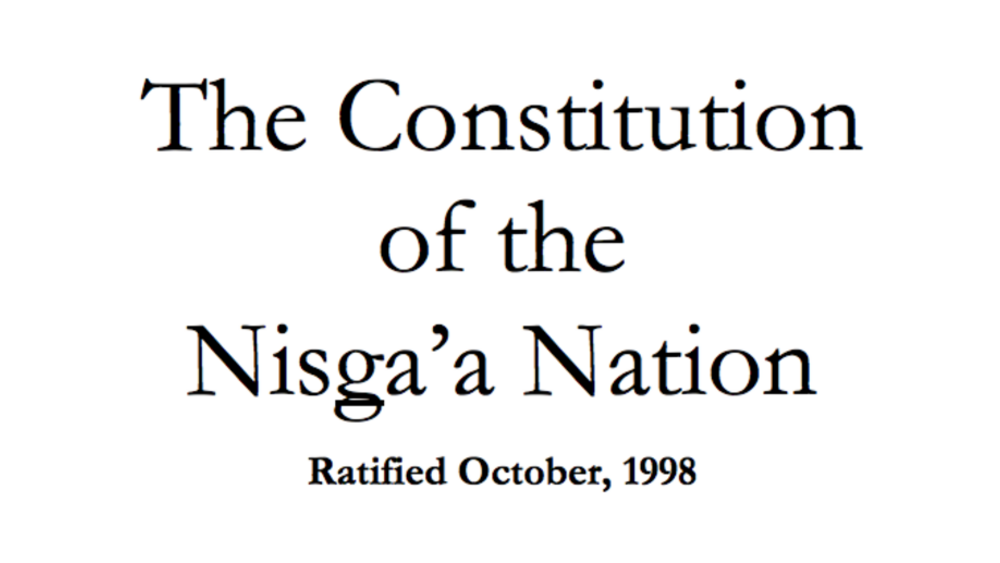
Nisga’a Nation: Judiciary Functions/Dispute Resolution Excerpt
CHAPTER 8-DISPUTE RESOLUTION 48. Principles of dispute resolution Nisga’a seek to resolve disputes based on values expressed in the Ayuuk, including: (a) preserving the unity of the Nisga’a Nation; (b) maintaining the dignity of and respect for each individual; (c) acknowledging wrongdoing,…
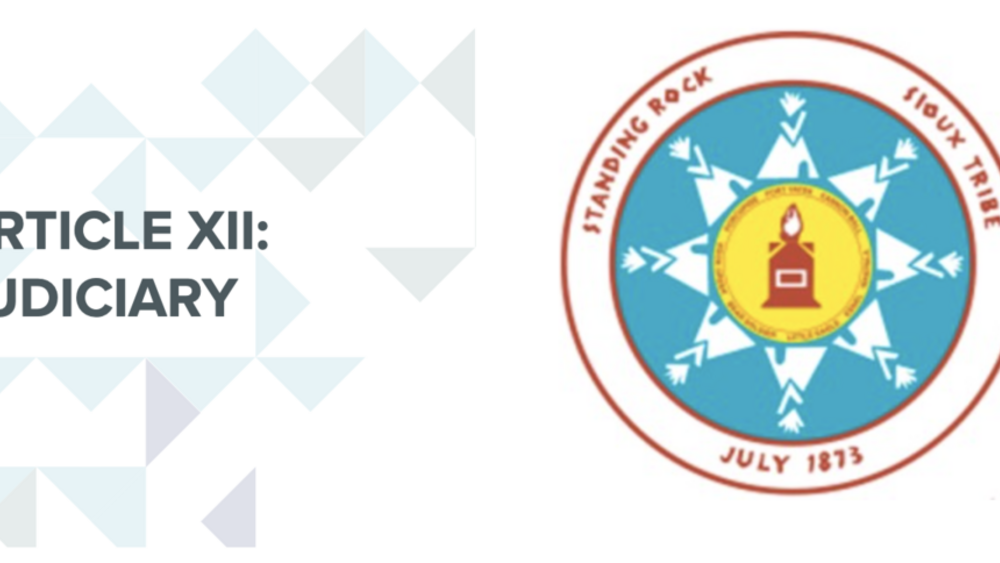
Standing Rock Sioux Tribe: Judiciary Functions/Dispute Resolution Excerpt
ARTICLE XII: JUDICIARY The judicial power of the Tribe shall be vested in one Supreme Court and one Tribal Court. The Judges of both the Supreme Court and the Tribal Court shall initially be appointed by a two-thirds majority vote of the Tribal Council to serve an initial term of…
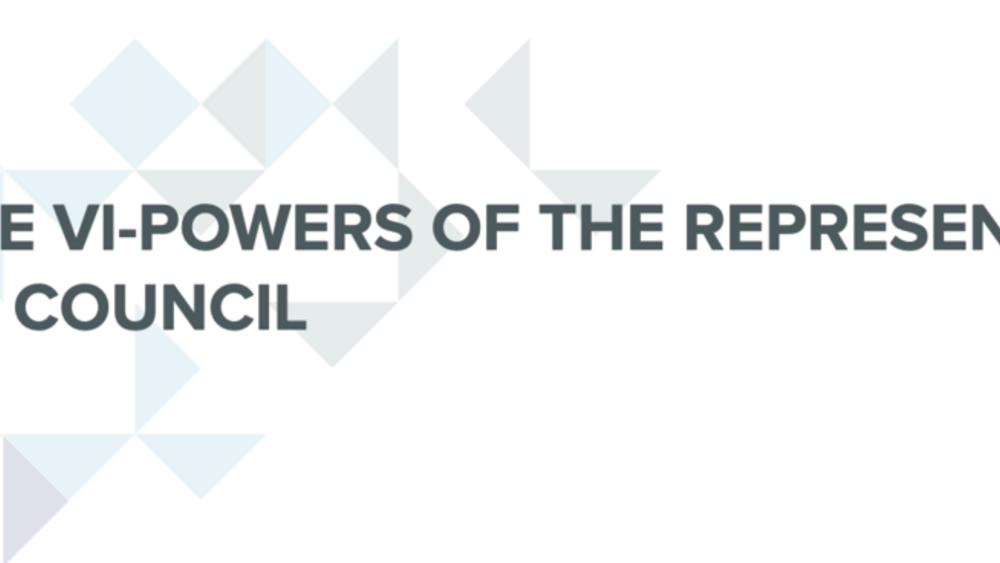
Jicarilla Apache Tribe: Judiciary Functions/Dispute Resolution Excerpt
ARTICLE VI-POWERS OF THE REPRESENTATIVE TRIBAL COUNCIL SECTION 4. Peace and Order.-The Council may make regulations, subject to review by the Secretary of the Interior, to protect the peace, safety, morals, and general welfare of the reservation, to provide a means of settling disputes, and to…
Pagination
- First page
- …
- 20
- 21
- 22
- …
- Last page
